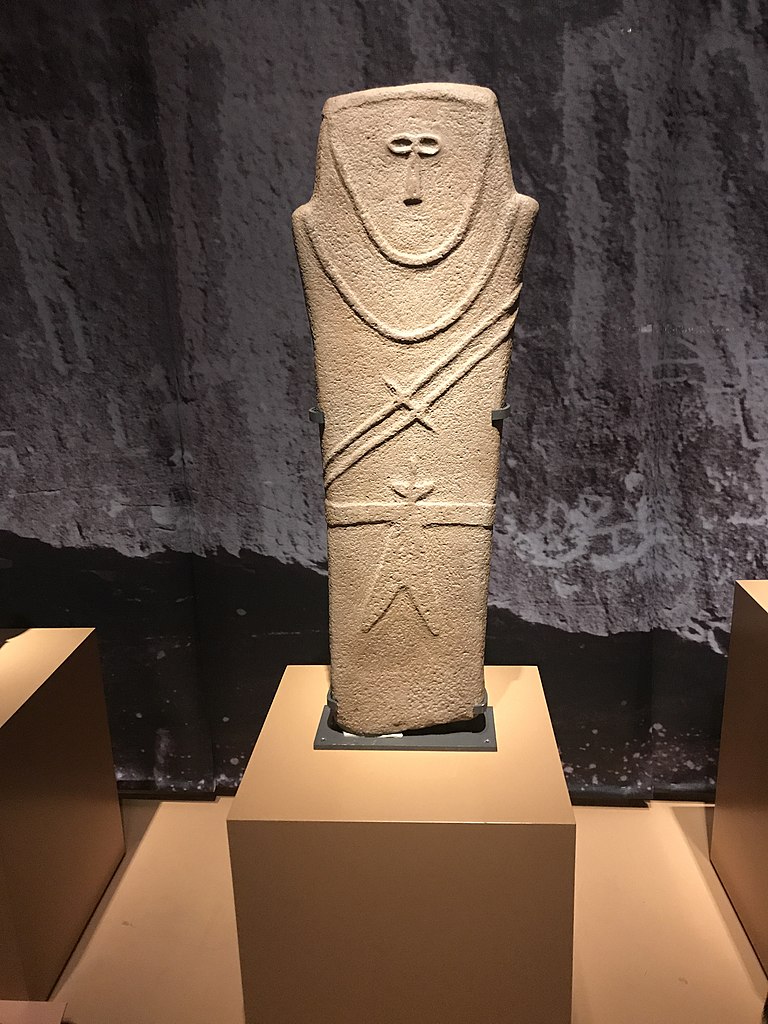The Ha'il Stele

Anthropomorphic Stele
At first glance, this stone carving might seem a little bizarre. However, you may be surprised to find out this humanoid carving; made of sandstone, that stands three feet tall. Is one of the earliest known artifacts of the Arabian Peninsula, dating back to 4th millennium.
As you can see, the features of this carving, are a face, a chest, a waist, a necklace that goes across the body with an awl attached, along with a double-bladed dagger warping around the waist. With all these features we can see, this is a human based figure; but what does it represent?
For archeologists, working in the Arabian Peninsula the wrong explanation could be troublesome; as this is quite new, archeology has been around for, 40 years, so it's difficult to determine what this carving represents. When looking at certain details, such as who created it, why, and by which culture. After discovering this ancient artifact archeologists have to consider, that other objects similar to this stele where traded across the Arabian Peninsula from as early as the Neolithic period. As other stone carvings were found, as well as rock, wall art from Tabuk, that had similar elements matching the Ha'il Stele. Such as the cord, awl and double-bladed dagger; meaning the Ha'il Stele could have come from Tabuk or anywhere from within the Arabian Peninsula.
This particular anthropomorphic stele, was found near a small village named Ha'il, in the northwest of Saudi Arabia, along with two other anthropomorphic stele, with similar human features; a head, two arms, and texture. The information above, points to evidence as to why, archeologists have a difficult time interpreting, something such as these stelae.

The archeologists who found these stelae, believe they were used as headstones at burials or for religious purposes. These anthropomorphic stele, could have also been used to show bravery or strength. Such as lions that are placed in front of homes, to show bravery, courageousness, and strength, which were also used to ward off evil beings. Whichever the case may be, these anthropomorphic figures, served a level of importance, we have yet to understand.


I didn't expect the first picture of the stone carving to resemble a person. I also found it interesting how these head stones represented strength and got rid of evil spirits. This was a good read.
ReplyDeleteAfter reading this, I think you did a good job at explaining how archeologists interpreted this statue. It is clear that they considered the type of material this was made from, but still had a hard time finding its true meaning. To further expand on your blog, you could discuss what you think this artwork means. Do you also think that this piece represented headstones at burials, or do you think otherwise?
DeleteI absolutely love this piece, it is so interesting to look at it could tell so many different stories and i liked your explanation on how it was made
ReplyDelete